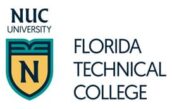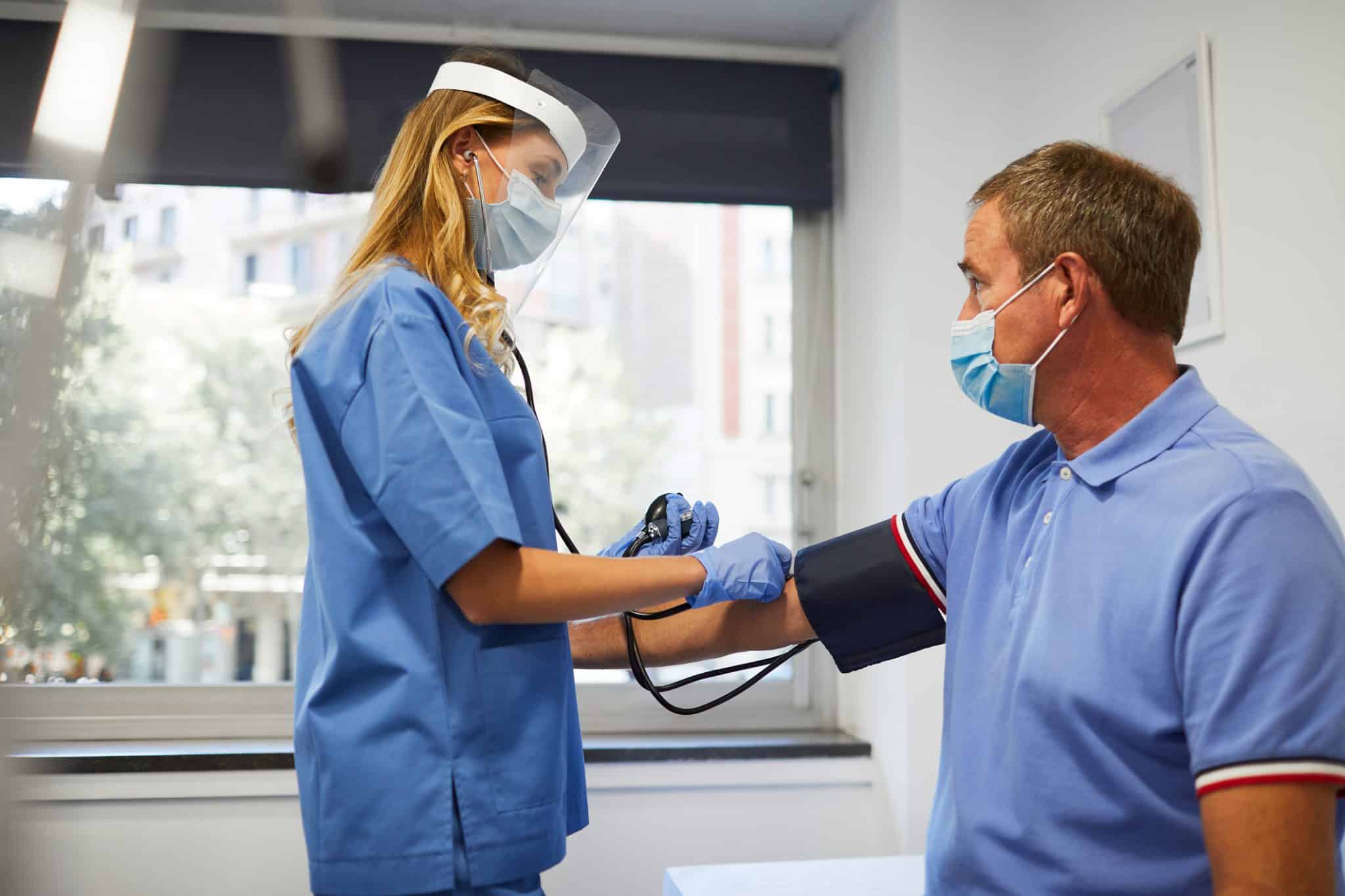Of the many subjects medical assistants study in school, anatomy and physiology are among the most crucial. Essential for a broad range of on-the-job functions, it’s a must-have knowledge you’ll use daily as a medical assistant.
Why Anatomy and Physiology Is Important for Medical Assistants
References to anatomy and physiology are a part of almost everything medical assistants do. Whether drawing blood, assisting with treatment, or ordering supplies, understanding the basics of body structure and function is the key to success.
The foundation of many skills, it will help you perform these functions:
Patient Assessment
Medical assistants conduct initial patient assessments. This involves taking vital signs and recording medical history. Knowledge of anatomy helps you identify anatomical landmarks and understand how diagnoses impact patient care.
When measuring blood pressure, for example, you need to know where the brachial artery is located to correctly position the cuff. Knowledge of cardiovascular anatomy and physiology is also required for obtaining a heart rate. You may be asked to measure a pulse at several peripheral points, such as over the radial, femoral, or popliteal arteries.
When counting respirations, understanding respiratory anatomy and physiology helps you identify and describe breathing irregularities, such as using accessory muscles. And because using accessory muscles to breathe signals respiratory distress, it may affect how you approach, monitor and care for patients. You may, for example, want to prepare emergency oxygen if their condition deteriorates.
Surgical and medical history also affect how tasks, such as taking vital signs, are performed. If a patient reports having a unilateral mastectomy with lymph node removal, taking a blood pressure reading on the affected side could cause swelling and discomfort.
Venipuncture
Drawing blood is one of a medical assistant’s most valuable skills. But it requires a firm grasp of vascular anatomy, the structure of arteries and veins. While most samples are taken from the brachial vein on the inner aspect of the elbow, you may need to find an alternate site if the vein runs deep or is scarred due to repeated use. Knowledge of anatomy and physiology will help you identify the most appropriate sites and techniques to ensure sample quality and patient comfort.
Patient Positioning
Medical assistants assist healthcare providers during procedures and examinations, so understanding anatomical positions is critical. Preparing a patient for a lateral hip x-ray, for example, means having the patient lay on their right side so that their left hip is exposed.
Knowledge of anatomy and physiology also helps you address function and mobility issues. A patient a few days post-op of a left hip replacement may need physical support and positioning aids to lay still for imaging.
Medication Administration
Administering medications is a significant part of a medical assistant’s job. But when giving injections, for example, understanding the anatomy and physiology of muscles, subcutaneous tissue and blood vessels is vital. Care must be taken to avoid hitting nerves, blood vessels, and bones when giving shots.
Some intramuscular injections, for example, are better absorbed in the buttock. Others, however, are equally well absorbed through any muscle, so you can offer the patient their choice of injection site. Expertise in anatomy will help you administer injections safely and effectively.
Diagnostic Testing
Before conducting diagnostic tests, medical assistants often perform preliminary patient assessments, which include reviewing medical history, evaluating symptoms, and identifying potential contraindications or risks. Knowledge of anatomy and physiology helps medical assistants interpret signs in the context of the test being performed.
For example, understanding the cardiovascular system helps you to better assess a patient’s cardiac health before an EKG, aiding you in positioning and identifying safety precautions. It also improves your understanding of normal and abnormal test results, enabling you to identify situations that may require immediate intervention.
Treatment Preparation
Medical supplies, such as gloves, masks, bandages, and instruments are used as part of many treatments. As a medical assistant, you must select and prepare these supplies.
Anatomy and physiology principles will help you assess the quantity, quality and types of supplies required to perform treatments while maintaining a safe and hygienic environment.
Collecting Laboratory Specimens
Medical assistants collect body fluid samples, such as urine, for testing. However, some diagnostics have strict criteria. So-called “clean catch” urine specimens, for example, require a thorough cleansing of the urogenital area and precautions to prevent the contamination of samples with bacteria. You’ll rely on your anatomy and physiology lessons to explain collection instructions to patients who can handle the process and to assist those who can’t.
Patient Education
Medical assistants educate patients about self-care strategies on the doctor’s behalf. Knowledge of anatomy and physiology helps them explain how healthy lifestyle choices, such as regular exercise and a balanced diet support overall physiological function. By illustrating the direct connection between treatment recommendations and positive health outcomes, medical assistants can motivate patients to comply with their treatment plans.
Understanding how body systems work also allows medical assistants to educate patients about the warning signs associated with changes in their condition, empowering patients to actively participate in their care. Suppose you can explain, for example, why feeling short of breath could indicate a worsening of their heart disease. In that case, it’s more likely that they will recognize and report potentially life-threatening symptoms.
Managing Referrals
One in three primary care patients is referred to a specialist annually, requiring the exchange of medical records. Medical assistants typically handle this task because their studies in anatomy and physiology help them find the relevant information in the patient’s chart.
Medical assistants also need to communicate effectively with healthcare professionals using precise anatomical terminology, so understanding anatomical planes, regions and directional references helps medical assistants accurately describe patient symptoms. If a patient is referred to a gastroenterologist for abdominal pain, the doctor will want to know where it hurts.
Referrals may also involve coordinating diagnostic tests or procedures with specialists. Knowledge of anatomy and physiology enables medical assistants to understand the purpose of specific tests and communicate that information to the patient. They may also assist in scheduling the necessary diagnostics. ensuring patients follow the appropriate preparation and follow-up instructions based on anatomical and physiological principles.
Patient Communication
A medical assistant is a patient’s first point of contact in a healthcare office. As a go-to source of information, you’ll answer their questions on topics ranging from which symptoms to worry about to how to take their medications. You’ll often fall back on your anatomy and physiology studies to help you explain essential principles.
Patients, for example, are frequently confronted with medical terms they may not understand. If you get a call asking what administering eye drops OU means, you’ll know it stands for the Latin “oculus uterque,” meaning to instill it in both eyes.
Collaboration with the Healthcare Team
Medical assistants work closely with other members of the healthcare team. Knowledge of anatomy and physiology allows them to participate fully in discussions or care conferences. This collaboration helps ensure coordinated and comprehensive care throughout the collaboration process and is especially important when you have findings to communicate. There are fewer misunderstandings when everyone shares a common language.
Final Thoughts
Anatomy and physiology are complex subjects that can be learned in vocational school programs, it’s one of the many benefits of getting a diploma. You’ll get a comprehensive education in body structure and function, preparing you for a rewarding career as a medical assistant.
Medical Assistant Technician Diploma Program
The Medical Assistant Technician Diploma Program prepares you for entry-level employment as a medical assistant technician. This program offers you the opportunity to learn the necessary knowledge and skills both in the classroom and in supervised clinical practice or capstone. You will learn how to prepare patients for various technical examinations such as EKGs and phlebotomy, as well as how to perform several such procedures.
Ready to move from the classroom to a career? Florida Technical College is here to help. Contact us to learn more about completing a Medical Assistant diploma program at Florida Technical College.
NUC University (NUC) is an accredited institution and a member of the Middle States Commission on Higher Education (MSCHE) www.msche.org. NUC’s NUC University – IBC Technical Division (NUC-IBC), NUC University – Florida Technical College (NUC-FTC), and The Digital Animation & Visual Effects School (The DAVE School) are included in this accreditation. NUC’s accreditation status is Accreditation Reaffirmed. The Commission’s most recent action on the institution’s accreditation status on 2019 was to reaffirm accreditation. MSCHE is an institutional accrediting agency recognized by the U.S. Secretary of Education and the Council for Higher Education Accreditation (CHEA).
*These examples are intended to serve only as a general guide of possible employment opportunities. There are many factors that determine the job an individual may obtain and Florida Technical College cannot guarantee its graduates any particular job. Some positions may require a license, degree, experience or other industry certifications. We encourage you to research the requirements for the particular position you desire



